Today we get another lesson on what it means to be a great parent when an Imgur user posts the pictures of a decoration for his daughter's bedroom he had spent over $4250 and more than 300 hours on.
The drawing
I'm an artist in the video game industry, and don't usually draw with paper so I'm out of practice. Anyway, this was the last of about a dozen sketches I did before building the model. Most of the earlier drawings looked too scary, and the last thing I wanted was for it to give her nightmares!
1:12 scale model
I used Sculpey modeling clay and some plywood cut in the dimensions of her room, including the window and beams in the ceiling. I drew grid lines 1" apart. I put the whole thing in the oven for 25 minutes at 275 degrees to bake it to hardness.
Her room before work began
Pretty ho-hum little girl's room. Definitely ready for a make-over! Notice how she's not in the picture. She wasn't very excited about her room at this point.
Making a work area
I knew I'd be working for months at this spot, and needed a solid work surface. A sheet of plywood screwed to saw horses did the trick. Then I screwed the sawhorses right into the sub-floor for added stability.
Grid lines go down
1' grid lines to match the model. This made it a lot easier to quickly see where things like branches were supposed to be.
Drawing the silhouette
If I drew the silhouettes of the model on the wall, I could attach the steel rebar straight to these lines. The nice thing about organic shapes is you can get away with eyeballing things. Mistakes were made.
Floor and wall silhouettes
As soon as the shape was drawn on the walls and floors, I was ready to start welding!
Steel skeleton
I mostly used 3/8" rebar and 1/8" steel rod from scraps, or Home Depot. To make the tree climbable, the frame needed to be pretty strong. So I over-engineered it to easily support 3 adults, even though it would only ever be used by little kids. As I worked, I'd hang on the different parts, testing for strength.
Shaped rings for branches
The process was pretty basic: insert one end of the rod in the vice, pull down to add a curve, repeat until I had a full circle.
MIG welder and fan
This setup ended up working well. At the recommendation of my instructor, I bought a Miller 211 MIG welder for its relative ease of use. The inert shielding gas comes from the wire itself. I also got a 30" industrial fan to suck the smoke out the window as I worked. (I also wore a welding respirator). To get 240v power to the room, I built a 50' 8 gauge extension cord to plug into the dryer receptacle in the laundry room at the other end of the house.
BZZZZSHP!
I found my welding teacher on craigslist. She's a professional sculptor named Carla Grahn, and she was offering 1-day private classes at her studio in Seattle for a few hundred bucks. I learned a ton from her and it was well worth the cost.
Steel skeleton close-up
Amateur welds.
Skeleton is almost finished!
I'm a hopeless perfectionist, and I spent too long making the skeleton look good, as if it would be seen or something. Later, when I was doing the concrete it was painfully obvious I could have made the skeleton more crude, saving lots of time. At this stage I'd spent about 100-120 hours.
Applying the skin
After some frustrating attempts to use 1/4" wire screen, I found "expanded metal lathe", which is much easier to work with! After trying to use wire to fasten the lathe to the skeleton, I opted for zip-ties. These were faster and easier to use than wire.
Applying the expanded metal lathe to the branches
I thought this part would go fast. Nope.
Skin is almost finished.
The happy customer. Not shown: my bandaged hands and arms. (At this stage I was about 175 hours in.)
Low-voltage lighting
I pre-wired the lights for the fairy windows and door using small fiberglass waterproof 12v landscape lights. I taped over the glass covers with blue painter's tape to protect them from the concrete phase.
Applying the concrete
The formula I found worked best was 2 parts portland cement, 1 part water, 1 part polymer fluid. This fluid can be bought from "Something Better Corporation" online. They also have some videos on youtube showing how this is mixed and applied. I added 2oz of 1" fiberglass shreds to the mix. I used a 5-gallon bucket and a heavy-duty drill mixer. The concrete was applied with a trowel just like stucco application. For the texture, I used silicone bark rollers and clay sculpting tools for the smaller details.
Paper mache on the outer branches
After a few failed attempts to get the concrete to stick to the outer branches, I realized it would have to be paper mache. It's not only very strong when layered several times, but lightweight and easy to apply.
Ready for painting!
This was a big milestone in the project and something I was really looking forward to. But I have very little experience painting, other than Warhammer 40K miniatures from when I was about 17. So, I decided to paint it exactly the same way! (At this stage I was about 225 hours in)
Dark to light!
Just like painting my war-gaming miniatures, I started with a very dark coat, then gradually applied lighter colors.
Rit dye works like an ink wash!
When I painted miniatures, a tiny bottle of colored ink was 10 bucks. I needed lots more than that. After a couple of depressing trips to art stores, I realized Rit clothing dye might work. For less than 20 dollars, I had several colors and plenty of it! I mixed the dye with a little water and brushed it into the crevices.
Blending in some color variety
I'd take the kids on walks and shoot pics of trees with my phone as reference. I have lots of tree pics.
Trying to get the "bark" colors right
I used the dark ink washes over the lighter colors, then dry-brushed over that when it dried to get the crusty bark look.
My encouragement!
I kept this picture of her in the room to help me through the tough parts.
Painting the walls
It was nice to work on something besides the tree.
Blending before glazing
Here's the rough blending
Woolie glazing pad
This technique worked well. You can see videos of how to apply glaze with a "woolie" on youtube.
Hardwood floors with underlayment
My father-in-law helped me install the hardwood floors. We put in some flooring at his house a few years ago, so I cashed in the favor. We used a good insulating underlayment because her room is above a part of the house that doesn't get much heat.
Cutting the hardwood for the carpet
I'd pre-drawn this curve on the sub-floor. Then I used a jigsaw to cut each piece of hardwood before nailing it in, to get this curve shape. The plan was the put squishy green carpet around the tree.
Retrofit kit for glass doorknobs
These retrofit kits allow you to use stem knobs in standard holes. I found the knobs on amazon.
Cutting the fairy windows
Finally used the RotoZip after 5 years.
Watercolor paper for window "glass"
Hot glue gun: the most valuable craft tool ever invented.
Painting the window "glass"
I used watercolor paint to add the dirty brown look to the paper. The light would then shine through and make the windows look "old timey".
Low-voltage transformers
I used deep-set receptacle boxes so I could put these transformers right behind the switches, keeping them enclosed. These transformers are wired to the window lights. Each window light has a small landscape light inside.
The fairy door
Dremmel tool to carve the wood details, then wood stain.
Fairy door with details
A trip to the local Michael's craft store yielded some good details pieces for the door. I found the doorknob at Anthropologie. I made the big gold hinges from Scupley and painted them with Testors paints.
Fancy foliage
Most of this was found at Michael's and a nursery called Molbak's.
Ferns for the branches
I clipped plastic ferns apart to make sprigs for the branches.
Bird nest!
There's about 5 bird's nests in the tree. This one's the biggest.
Birds and butterflies
A detail shot. Hot glue gun was used heavily at this point.
Magic fairy, umm... balls
Hand-blown glass. Most of the decorations are cheap but we splurged on a few of them. I made sure to fasten ones like this with heavy wire to steel parts of the branches.
Butterflies!
Hot glue gun strikes again.
Lights in the branchesI wired 6 series of 50 standard Christmas bulbs in parallel. They're controlled by a dimmer by the door, (I'd pre-wired for these through the branches) and when turned all the way down, look just like stars. In this picture they're turned to about 75%.
Final results

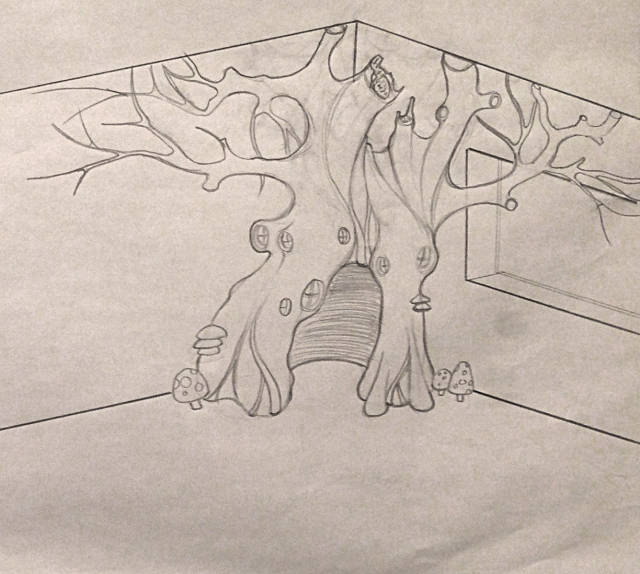
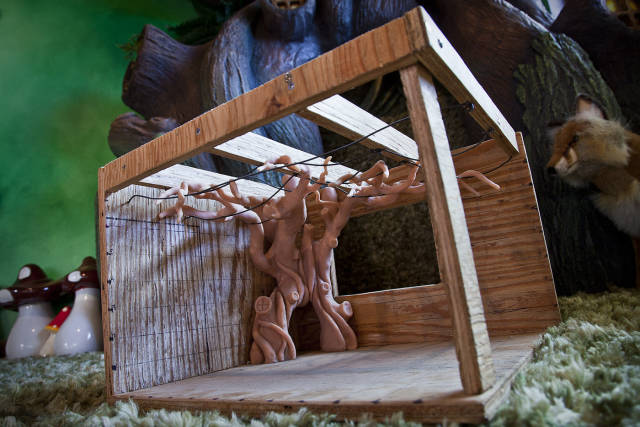
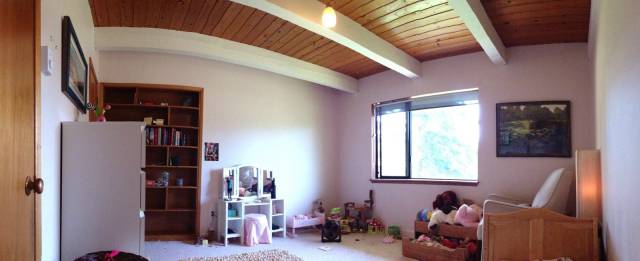
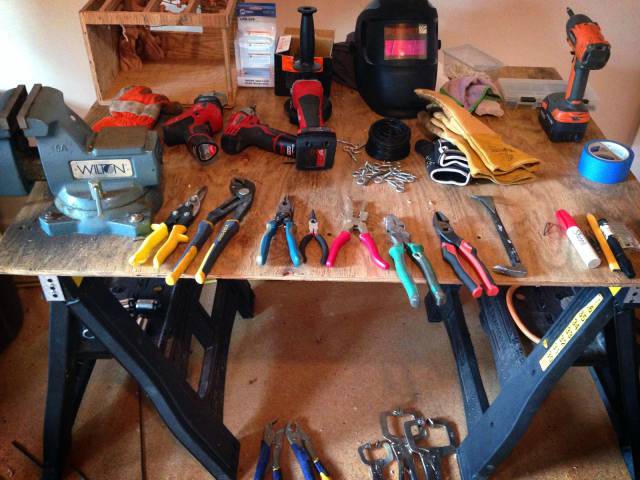

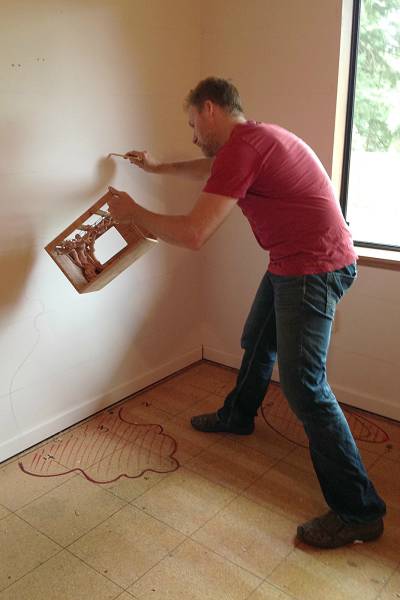
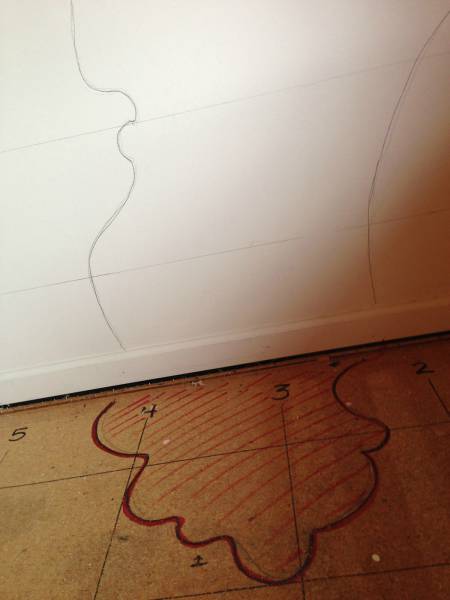

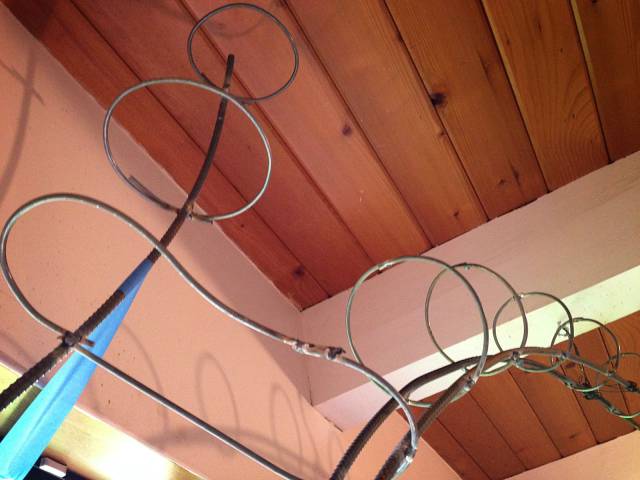

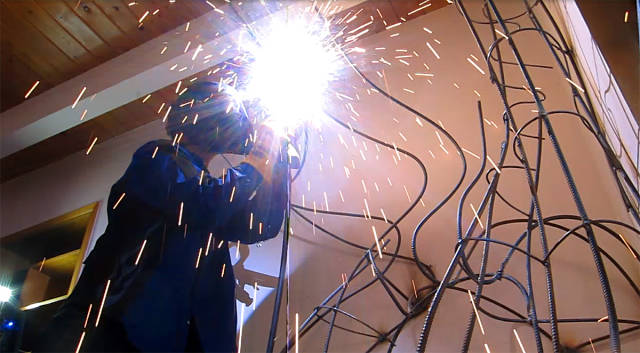
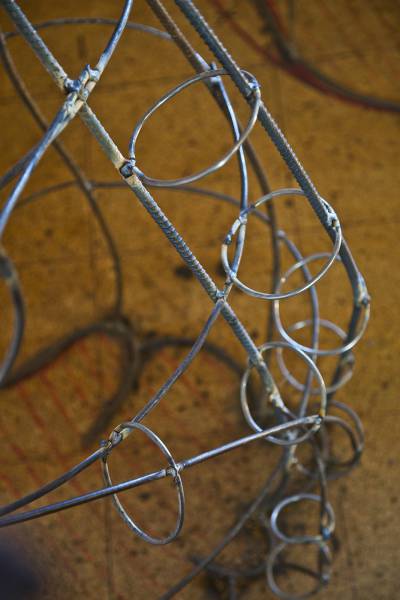
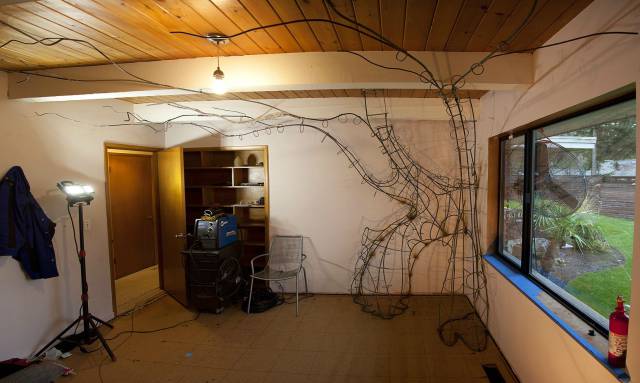
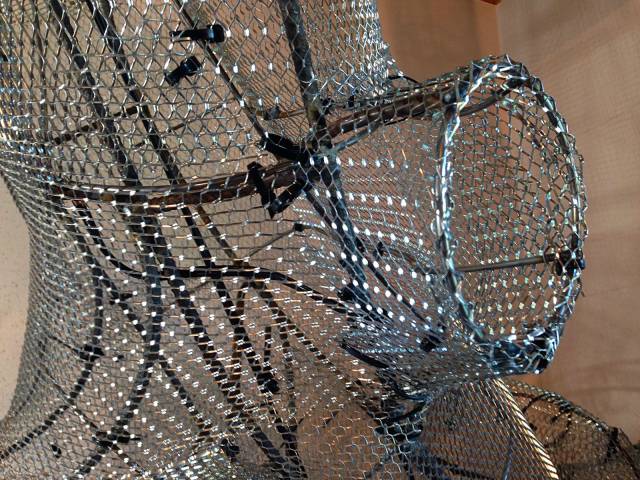
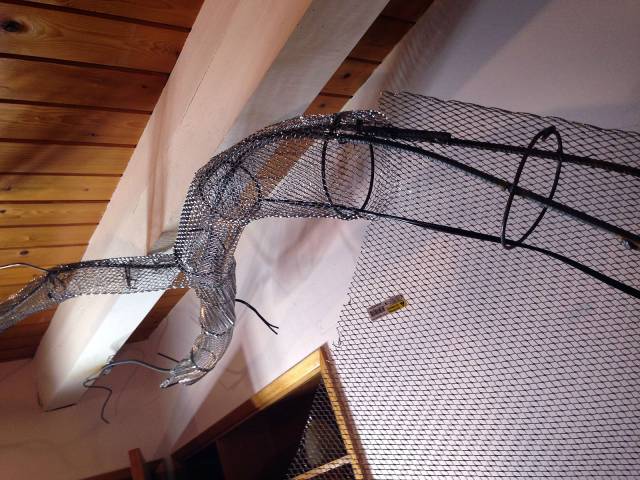
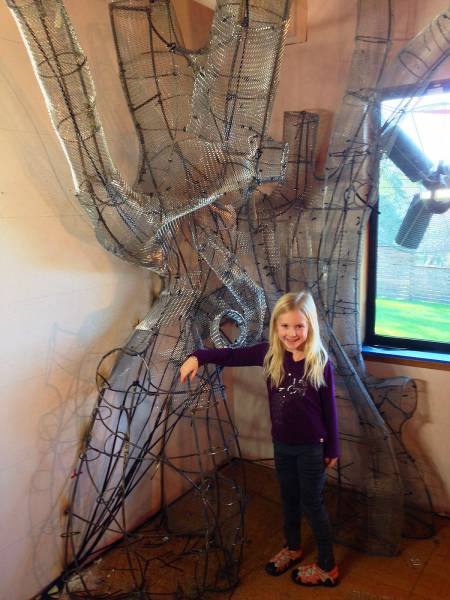
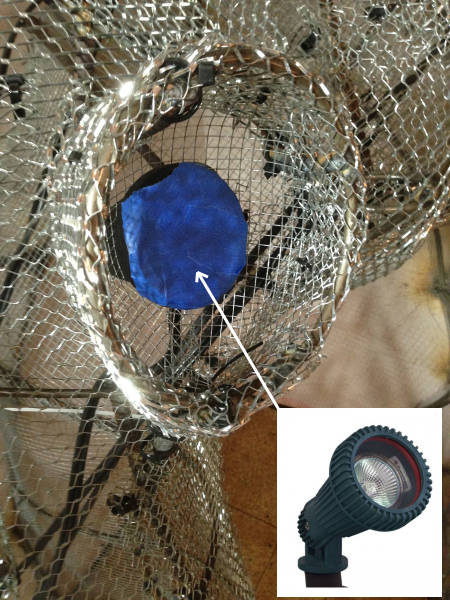
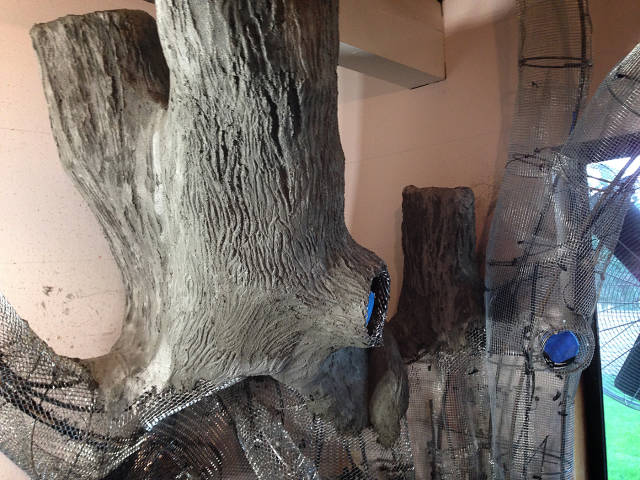
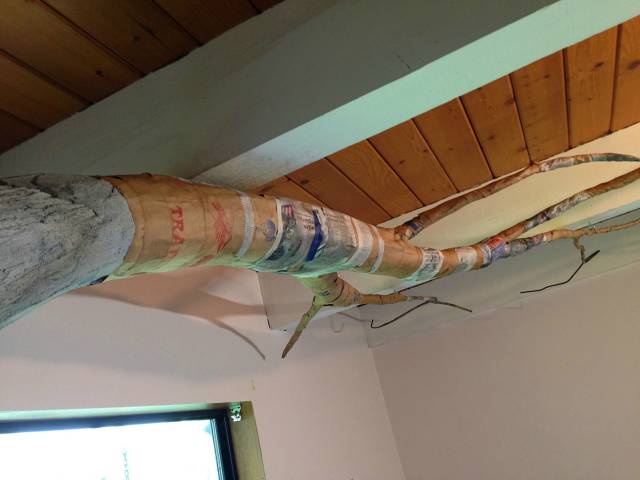

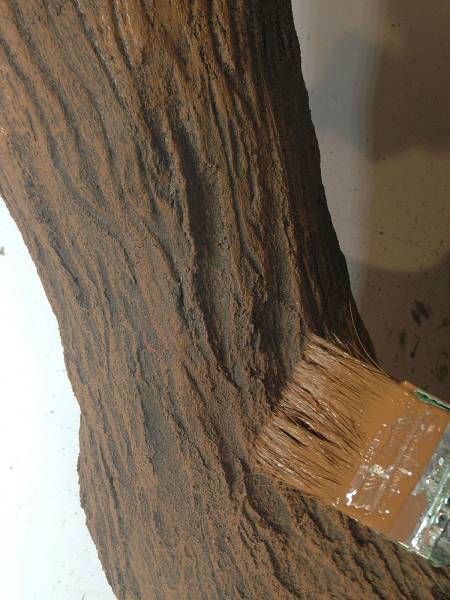
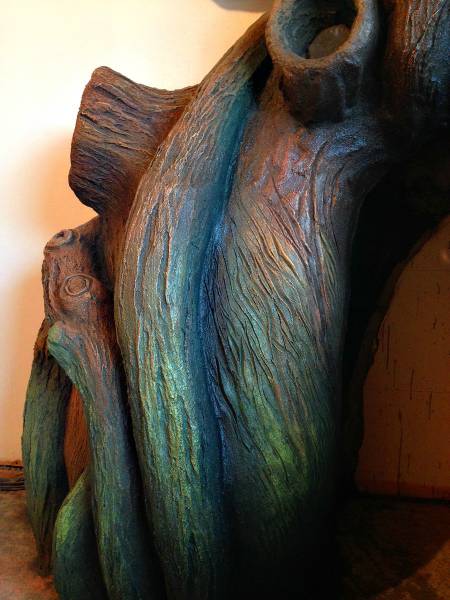
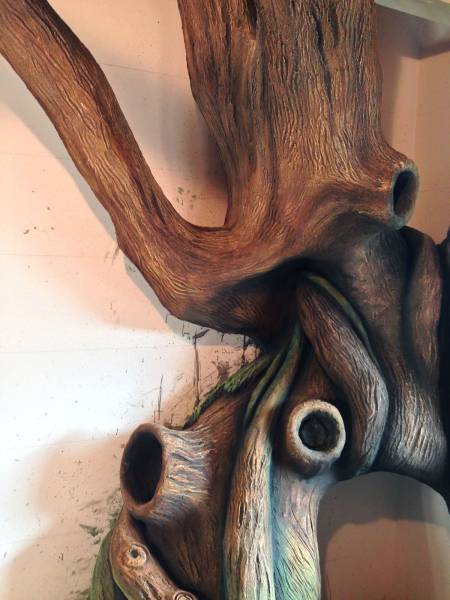
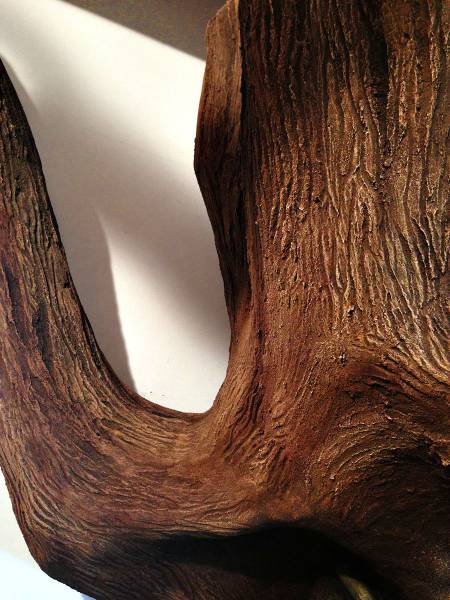


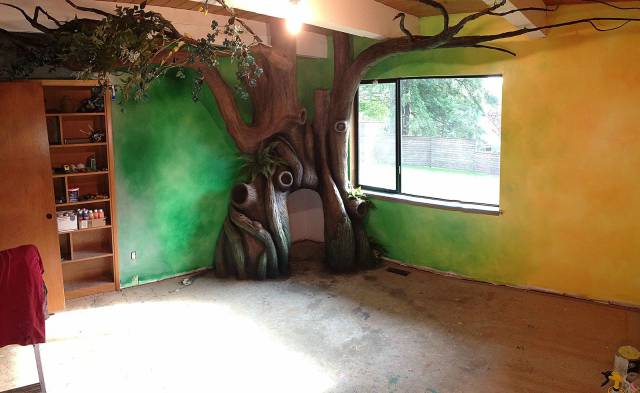
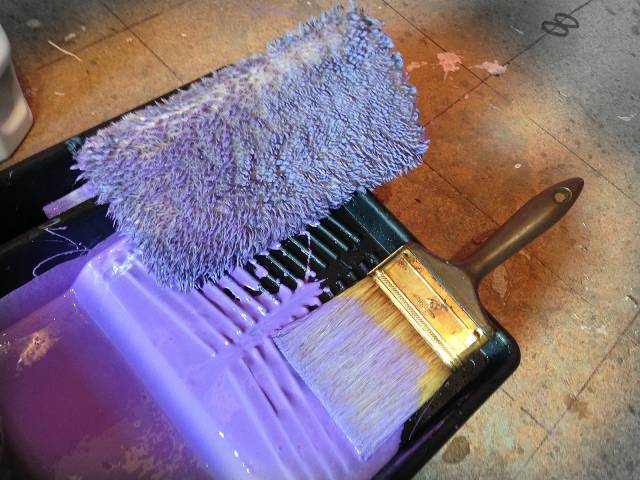
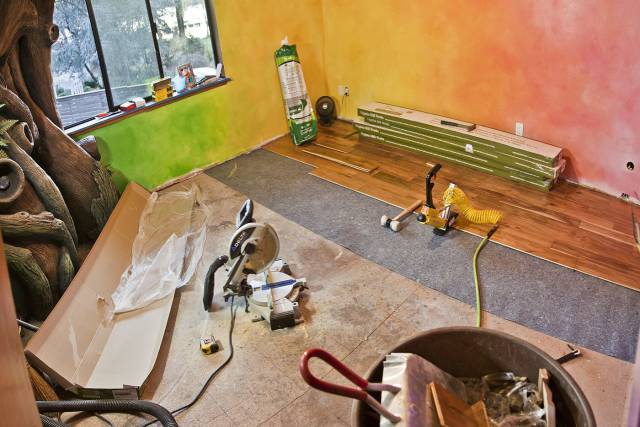
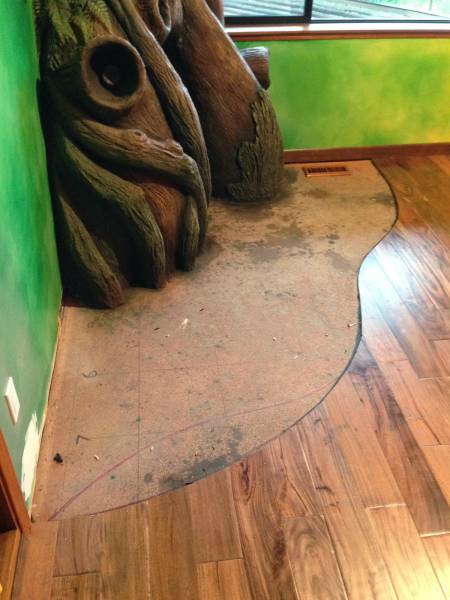
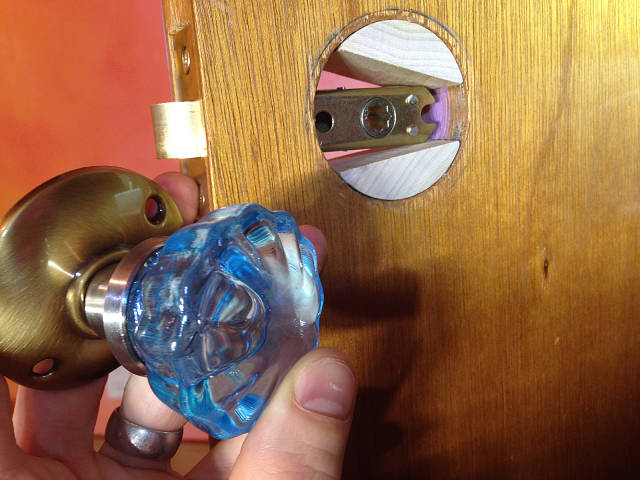
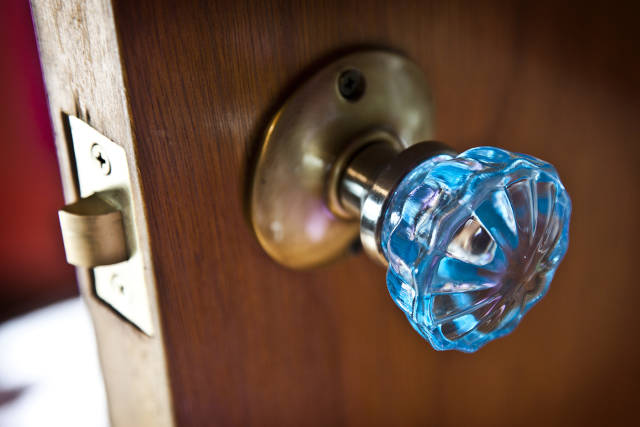
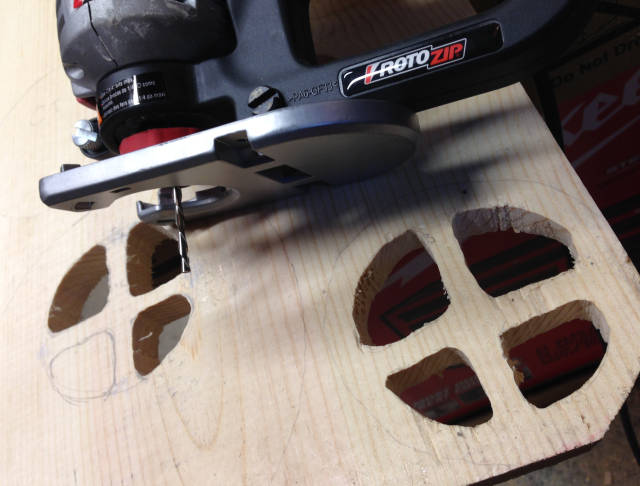

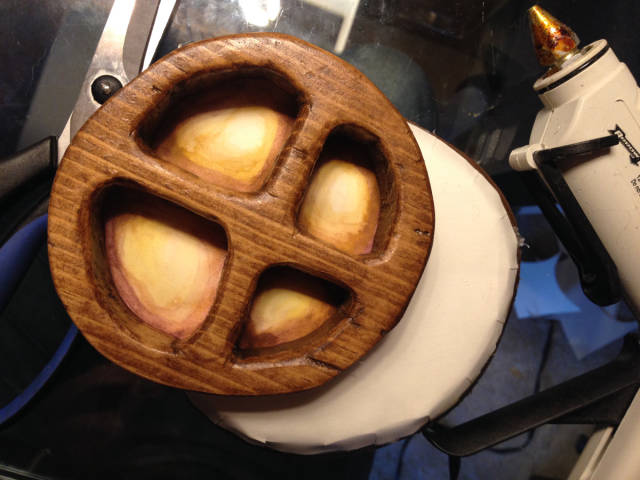
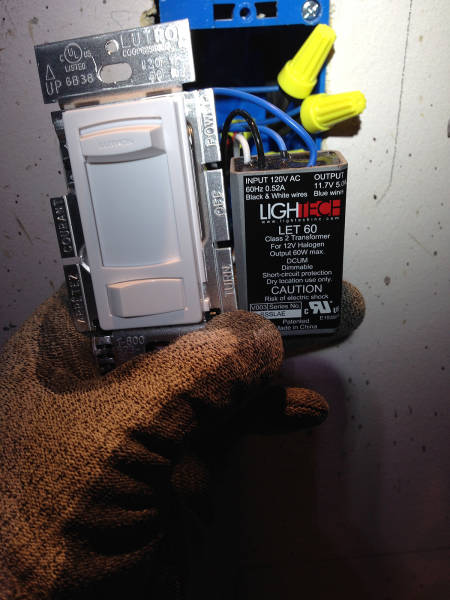
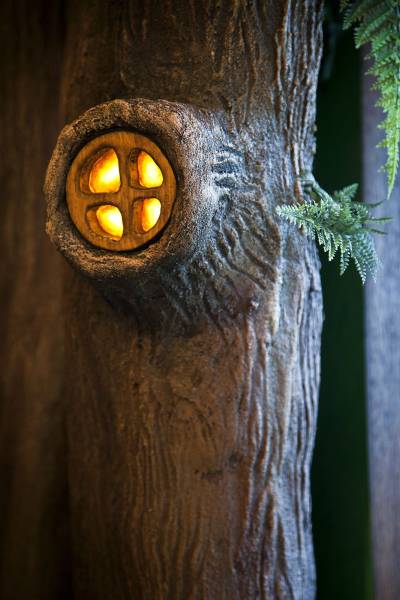
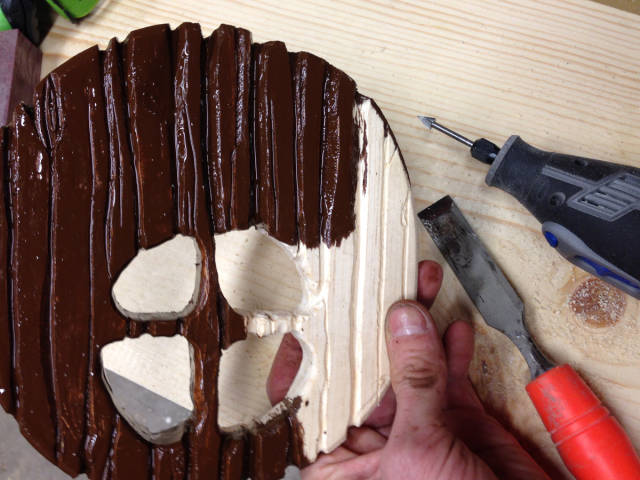
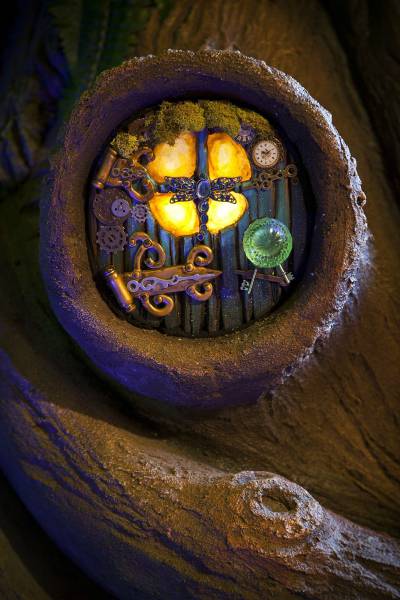

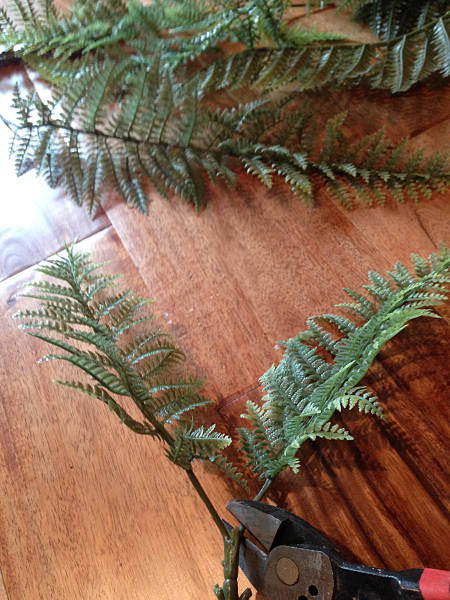
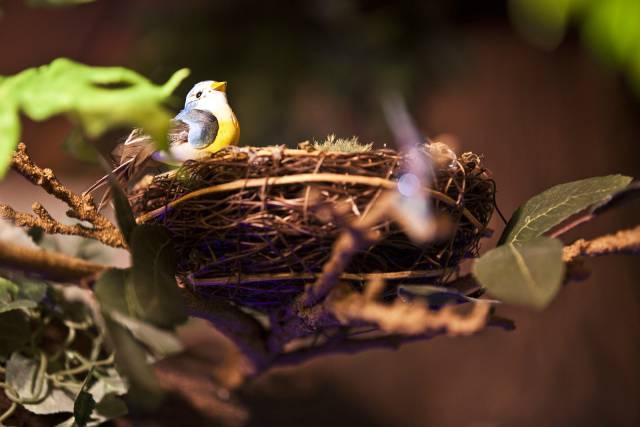

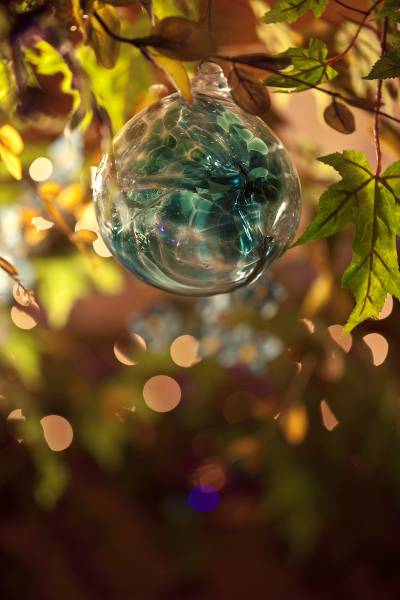
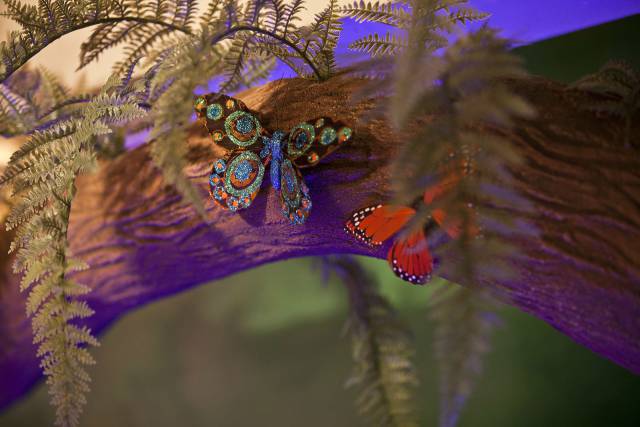
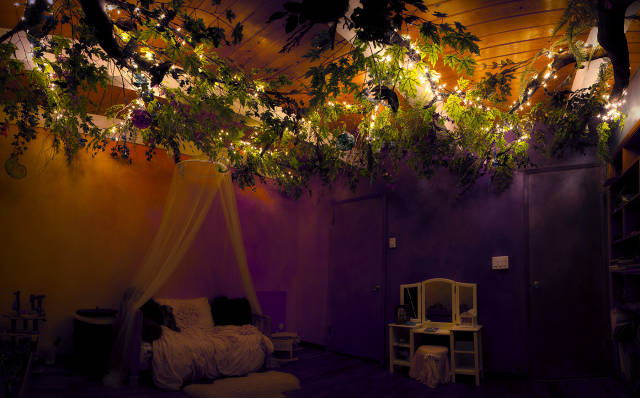

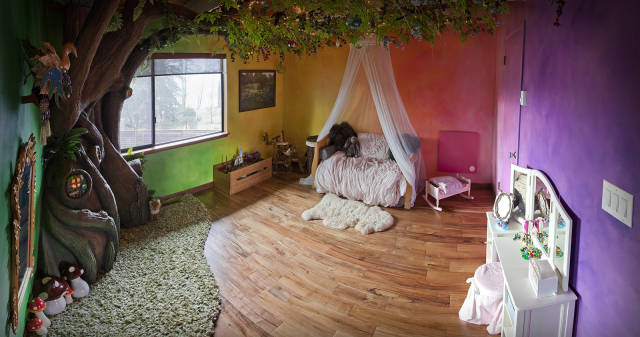

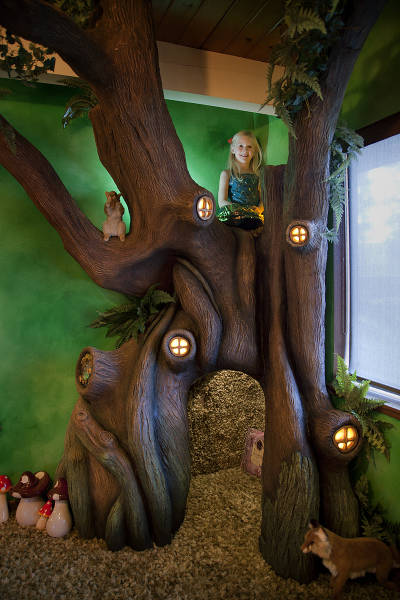

I for one am glad I saw this ..Be it "again??" or not...